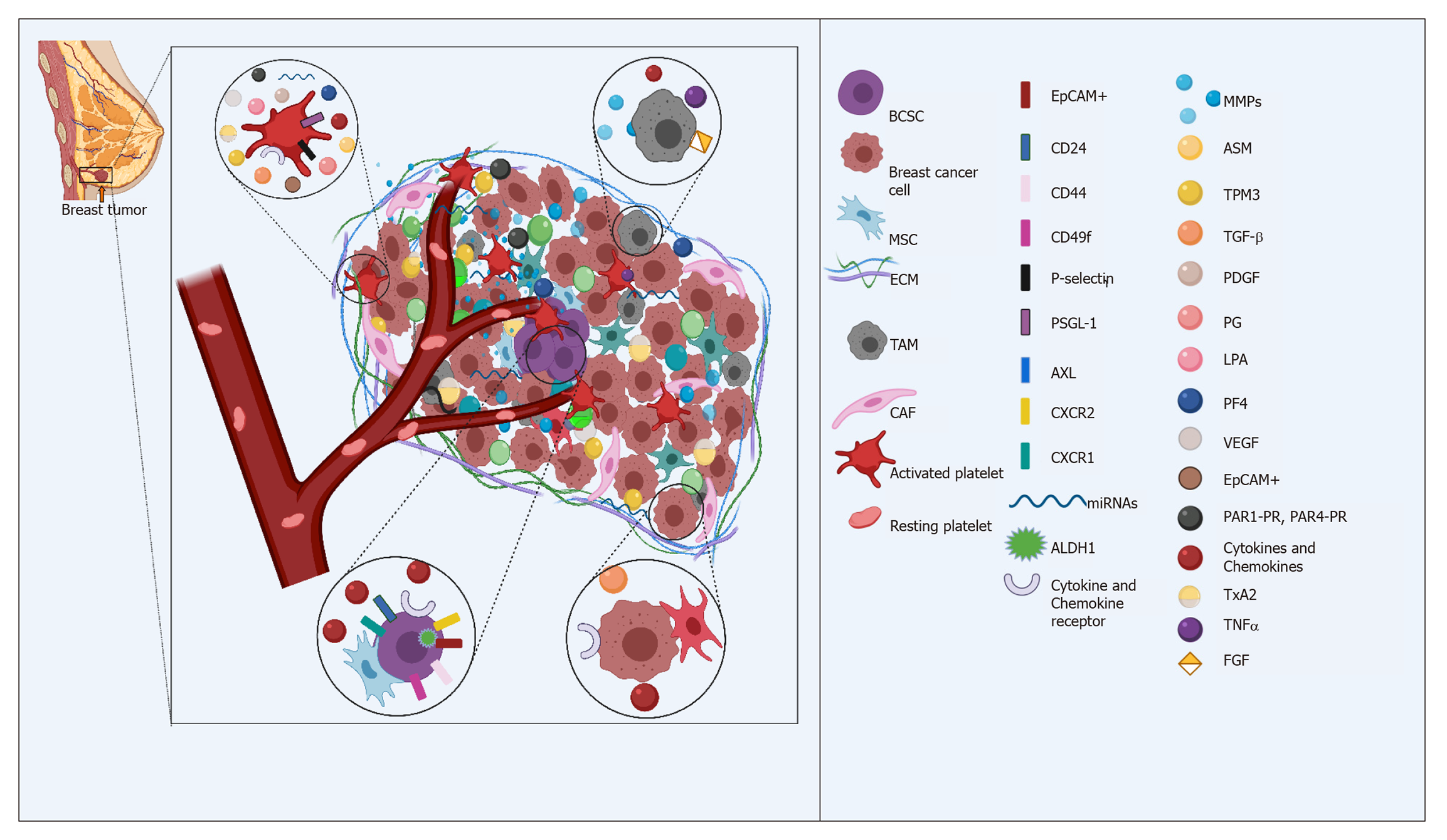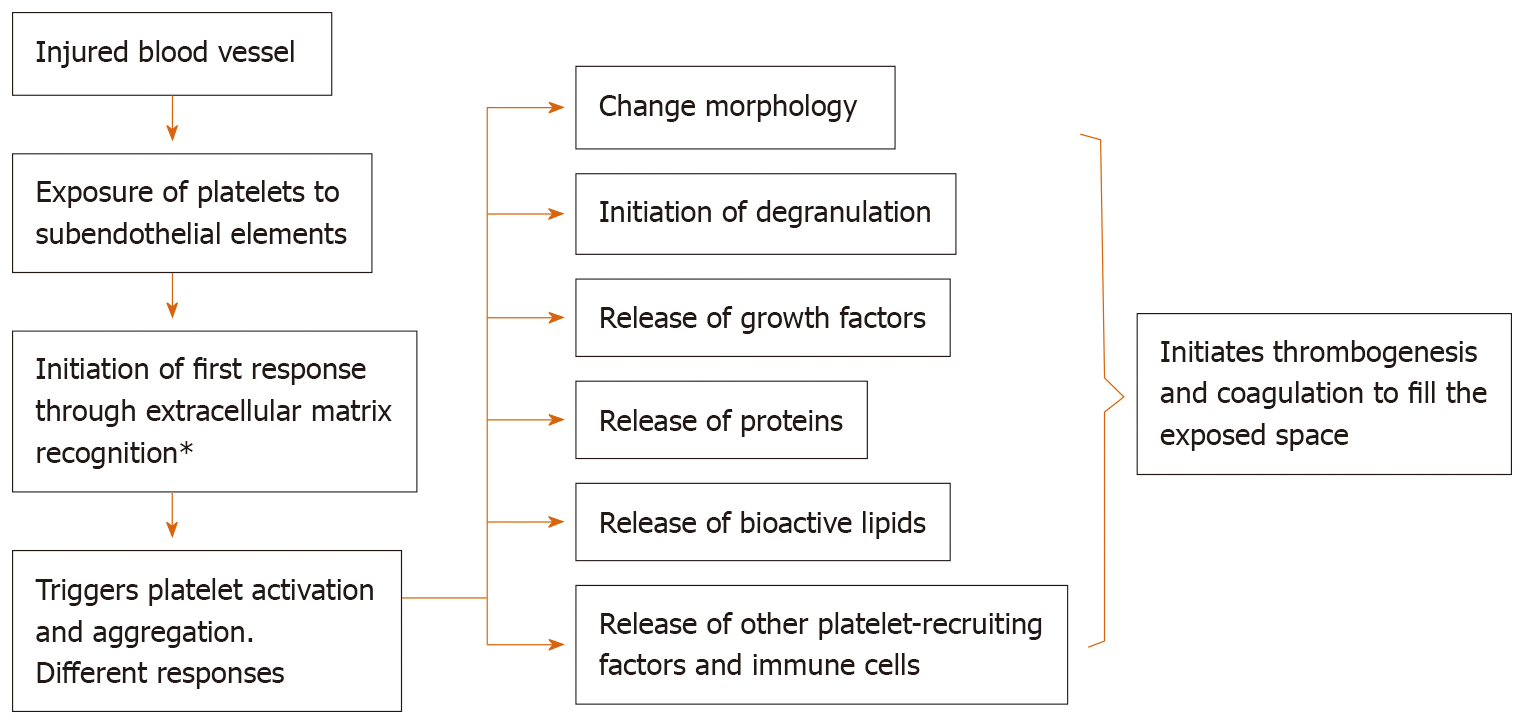Copyright
©The Author(s) 2020.
World J Stem Cells. Nov 26, 2020; 12(11): 1237-1254
Published online Nov 26, 2020. doi: 10.4252/wjsc.v12.i11.1237
Published online Nov 26, 2020. doi: 10.4252/wjsc.v12.i11.1237
Figure 1 Tumor microenvironment in breast cancer.
The figure describes the microenvironment present in cancer development. The tumor grows in an allowable microenvironment delimited by an extracellular matrix and inside there is a series of biomolecules such as cytokines, chemokines, miRNAs, growth factors. Furthermore, different cell types, such as breast cancer stem cells, platelets, tumor-associated macrophages, mesenchymal stem cells, and cancer-associated fibroblasts, contribute to the optimal conditions for cancer development. Biomolecules and cells, all orchestrate to promote tumor growth, angiogenesis, epithelial-mesenchymal transition, and metastasis. Created by Biorender.com. BCSC: Breast cancer stem cells; MSC: Mesenchymal stem cell; ECM: Extracellular matrix; TAM: Tumor-associated macrophage; CAF: Cancer-associated fibroblast. Created with Biorender.com
Figure 2 The role of platelets in wound biology.
The response by platelets depends on the recognition of extracellular matrix receptors[1]. These receptors can be proteoglycans, laminin, vitronectin, and various collagen isoforms.
Figure 3 Breast cancer metastasis.
Metastatic foci are the product of a series of events and in all these steps, they are accompanied by platelets. Breast cancer stem cell (BCSC) receives stimuli from the tumor microenvironment, including platelets, to allow the cellular transition epithelial-mesenchymal transition. Once the BCSC has achieved cell transformation and has broken the intercellular junctions and the extracellular matrix, it passes through the bloodstream or lymphatic system, always accompanied by platelets to avoid anoikis, shear forces and natural killer cells. The tumor educated platelets prepare the second metastatic niche. Created by Biorender.com. EMT: Epithelial-mesenchymal transition; TAM: Tumor-associated macrophage; CAF: Cancer-associated fibroblast; ECM: Extracellular matrix. Created with Biorender.com
- Citation: Mendoza-Almanza G, Burciaga-Hernández L, Maldonado V, Melendez-Zajgla J, Olmos J. Role of platelets and breast cancer stem cells in metastasis. World J Stem Cells 2020; 12(11): 1237-1254
- URL: https://www.wjgnet.com/1948-0210/full/v12/i11/1237.htm
- DOI: https://dx.doi.org/10.4252/wjsc.v12.i11.1237











